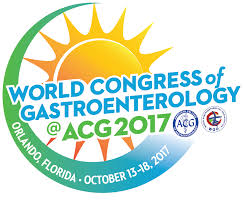Study participants saw 80 percent improvement for heartburn and regurgitation one-year post procedure when hiatal hernia and gastroesophageal valve were repaired sequentially
 REDMOND, Wash. – EndoGastric Solutions® (EGS), a leader in incisionless procedural therapy for gastroesophageal reflux disease (GERD), today announced the presentation of data from the Transoral Incisionless Fundoplication (TIF ®) 2.0 procedure using the EsophyX® device after hiatal hernia repair (HHR) in patients with chronic GERD symptoms. The study evaluated the symptom resolution, safety, patient satisfaction and efficacy of this approach. The prospective study data will be presented at the American College of Gastroenterology (ACG) 2017 Annual Scientific Meeting, October 13-18, 2017 in Orlando, Florida.
REDMOND, Wash. – EndoGastric Solutions® (EGS), a leader in incisionless procedural therapy for gastroesophageal reflux disease (GERD), today announced the presentation of data from the Transoral Incisionless Fundoplication (TIF ®) 2.0 procedure using the EsophyX® device after hiatal hernia repair (HHR) in patients with chronic GERD symptoms. The study evaluated the symptom resolution, safety, patient satisfaction and efficacy of this approach. The prospective study data will be presented at the American College of Gastroenterology (ACG) 2017 Annual Scientific Meeting, October 13-18, 2017 in Orlando, Florida.
Ninety-nine patients with a confirmed diagnosis of GERD symptoms at two community-based hospitals underwent the TIF 2.0 procedure immediately following a laparoscopic HHR in the same anesthetic session. All participants enrolled were symptomatic on proton pump inhibitor (PPI) medications with hiatal hernias between 2 and 5 centimeters.
Overall, the study met the primary efficacy and safety endpoints with no treatment-related adverse events, concluding that TIF 2.0 procedures can be safely and efficiently performed immediately following HHR. The study also met the secondary endpoints, with most patients reporting 80 percent improvement for heartburn and regurgitation and more than 50 percent improvement for bloating and dysphagia.
“While some patients may experience temporary relief from PPI medications, this study offers substantial evidence that HHR-TIF 2.0 procedures can provide lasting relief from chronic GERD symptoms, and improve patients’ quality of life,” said Peter Janu, M.D. of Wisconsin. “Our symptomatic outcomes confirm the excellent safety profile and the effectiveness of this combination procedure up to one year despite the initial larger hiatal hernia.”
The study data authored by Peter Janu, MD and Peter Mavrelis, MD, et Al., will be displayed as a poster on Tuesday, October 17, 10:30 a.m. to 4:30 p.m. ET in the Exhibit Hall.
“Findings from the prospective study support HHR-TIF 2.0 procedures as a potential new option for patients suffering from hiatal hernias greater than 2 centimeters,” said Peter Mavrelis, MD of Indiana. “We are excited to share these results and build upon the robust clinical data supporting the TIF 2.0 procedure as a durable treatment option for patient suffering from GERD.”
On June 22, 2017, EGS received notification from the U.S. Food and Drug Administration following 501(k) submission to expand the indication for the EsophyX device to include patients with hiatal hernias larger than 2 centimeters when a laparoscopic hiatal hernia repair (HHR) reduces the hernia to 2 centimeters or less.
“EndoGastric Solutions would like to congratulate the lead investigators, Drs. Janu and Mavrelis, for publishing a very important study,” said Skip Baldino, President and CEO, EndoGastric Solutions. “This compelling data and the FDA’s expanded label indication, will provide millions of patients access to a durable and effective solution to treat chronic symptoms of GERD.”
Indications
The EsophyX device with SerosaFuse® fasteners and accessories are indicated for use in transoral tissue approximation, full thickness plication and ligation in the gastrointestinal tract. They are indicated for the treatment of symptomatic chronic GERD in patients who require and respond to pharmacological therapy. The device is also indicated to narrow the gastroesophageal junction, and reduce hiatal hernia ≤ 2cm in size in patients with symptomatic chronic GERD. Patients with hiatal hernias larger than 2cm may be included, when a laparoscopic hiatal hernia repair reduces the hernia to 2cm or less.
